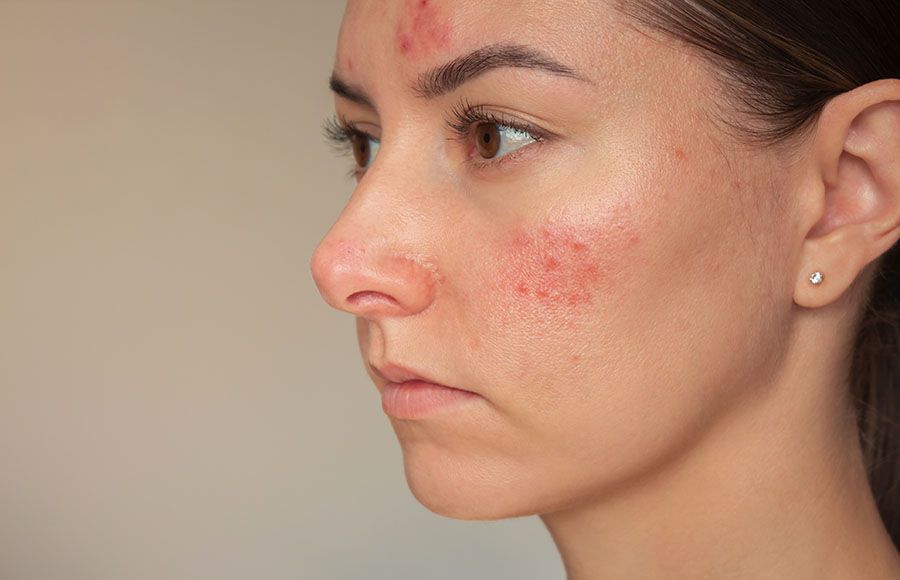Understanding the experience of Rosacea Treatment in Abu Dhabi is essential for those seeking relief from this common skin condition. Rosacea is a chronic skin disorder characterized by redness, visible blood vessels, and sometimes acne-like bumps, primarily affecting the facial area. Many individuals considering treatment often ask about the discomfort involved in the process, aiming to gauge whether the procedure will be painful or relatively comfortable. This article provides comprehensive insights into the nature of rosacea treatments, what patients can expect during the procedure, and how to prepare for a smoother experience.
What is Rosacea and Its Impact on Skin Health?
Defining Rosacea and Its Symptoms
Rosacea manifests as persistent facial redness, flushing, visible blood vessels, and sometimes bumps or pustules. It can significantly affect self-esteem and quality of life, especially when symptoms worsen over time. The condition often fluctuates, with flare-ups triggered by factors such as heat, spicy foods, alcohol, or stress. Understanding its symptoms helps in recognizing the need for effective treatment options.
The Importance of Managing Rosacea
Effective management aims to reduce redness, control flare-ups, and improve skin appearance. While lifestyle modifications help, medical treatments are often necessary for more persistent symptoms. Proper treatment not only alleviates physical discomfort but also boosts confidence and emotional well-being.
Overview of Rosacea Treatment Options
Non-Invasive Therapies
Non-invasive approaches include topical medications, laser therapy, and light-based treatments. These methods focus on reducing inflammation, shrinking visible blood vessels, and controlling symptoms with minimal downtime. Patients often prefer these options for their safety and convenience.
Minimally Invasive Procedures
Minimally invasive treatments involve advanced technology to target specific skin issues associated with rosacea. Laser and pulsed light therapies are common choices, providing targeted relief with minimal discomfort and quick recovery periods.
When to Consider Medical Intervention
Medical intervention becomes necessary when symptoms are severe or unresponsive to lifestyle changes. Consulting a dermatologist allows for personalized treatment planning that aligns with individual skin types and severity levels.
What to Expect During Rosacea Treatment
The Treatment Process
Most rosacea treatments, especially laser and light-based therapies, are quick procedures that may last from a few minutes to half an hour. The skin may be prepared with cleansing, and a cooling gel may be applied to enhance comfort. During the procedure, patients might experience a sensation akin to a rubber band snapping against the skin or mild warmth, which is generally well-tolerated.
Pain Level and Comfort
Many patients inquire whether rosacea treatment is painful. The majority report that discomfort is minimal, often described as a mild stinging or warming sensation. Modern technologies incorporate cooling mechanisms and adjustable settings to enhance patient comfort. Overall, the procedure is considered comfortable, with most individuals experiencing only slight sensitivity during and after treatment.
Post-Treatment Sensations
Following the procedure, some temporary effects like redness, swelling, or a tingling sensation may occur but typically resolve quickly. These sensations are normal and indicate that the treatment is working effectively.
Preparing for Rosacea Treatment
Pre-Treatment Recommendations
Prior to treatment, patients are advised to avoid sun exposure, irritating skincare products, and certain medications that might increase skin sensitivity. Proper skin preparation helps optimize treatment outcomes and minimizes discomfort.
What to Do on the Day of Treatment
On the day of your appointment, arrive with clean, makeup-free skin. Wearing comfortable clothing and following any specific instructions provided by your dermatologist ensures a smooth process. Communicating any concerns or sensitivities with the clinician enhances comfort during the procedure.
Post-Treatment Care and Recovery
Immediate Aftercare
Post-treatment protocols typically include applying soothing creams or moisturizers, avoiding sun exposure, and refraining from harsh skincare products. These steps help minimize any transient discomfort and promote healing.
Managing Discomfort
If slight discomfort or redness persists, over-the-counter remedies or prescribed topical treatments can provide relief. Most patients find that any post-procedure sensations diminish within a few hours to days.
Long-Term Skin Care
Maintaining good skincare practices, including sun protection and gentle cleansing, supports long-term results and helps prevent future flare-ups. Regular follow-up visits with a dermatologist ensure ongoing skin health and optimal outcomes.
Benefits of Choosing Professional Rosacea Treatment
Customized Treatment Plans
Professional clinics tailor treatments based on individual skin types and severity, ensuring effective and comfortable procedures. Personalized approaches maximize results while minimizing discomfort.
Advanced Technology
State-of-the-art laser and light therapies are designed to deliver targeted treatment with minimal pain and downtime. These technologies also help in achieving faster results compared to traditional methods.
Confidence and Comfort
Undergoing treatment in a professional setting provides reassurance, proper pain management, and post-care support, contributing to a more comfortable overall experience.
FAQs About Rosacea Treatment Experience
1. Is rosacea treatment painful?
Most patients report that rosacea treatment is minimally uncomfortable, often likened to a mild snapping or warming sensation. Modern devices include cooling features to enhance comfort, making the overall experience quite tolerable.
2. How long does the discomfort last after treatment?
Any sensations such as redness or mild tingling usually subside within a few hours to a couple of days. Following proper post-care instructions can help alleviate lingering discomfort.
3. Are there any pain management options available during treatment?
Clinicians often use cooling gels, topical anesthetics, or adjustable device settings to ensure patient comfort during the procedure, effectively minimizing pain or discomfort.
4. Can I resume my daily activities immediately after treatment?
Yes, most patients can return to their usual routines shortly after the procedure. However, it’s advisable to avoid sun exposure and harsh skincare products during the initial recovery phase to prevent discomfort.
Conclusion
Rosacea Treatment Abu Dhabi offers a range of effective and comfortable options tailored to individual needs. With advancements in technology, most treatments are quick, minimally invasive, and well-tolerated, providing relief from symptoms with minimal discomfort. Proper preparation and post-treatment care further enhance the overall experience, ensuring that patients can enjoy clearer, healthier skin with confidence. If you're considering rosacea treatment, consulting with a qualified dermatologist can help you understand your options and set realistic expectations for a smooth, pain-minimized journey toward skin health.
